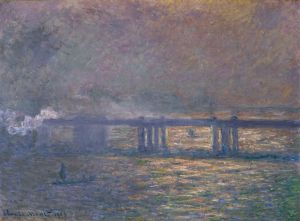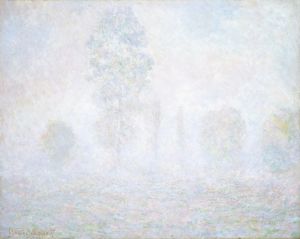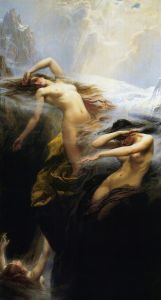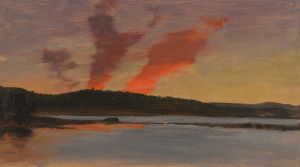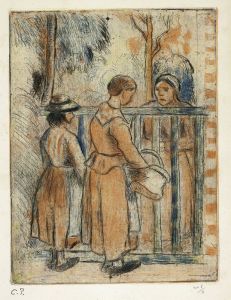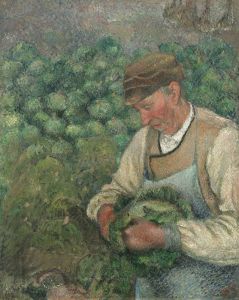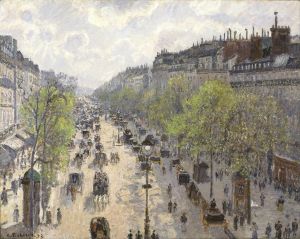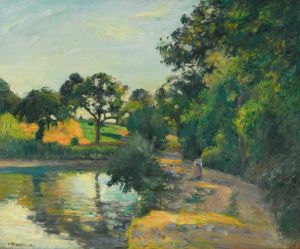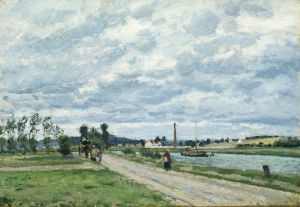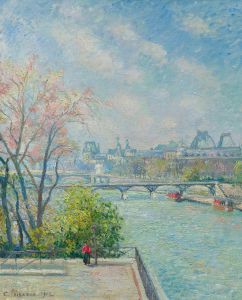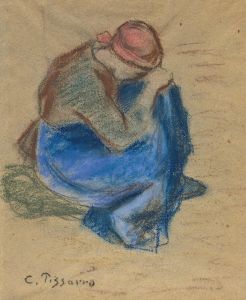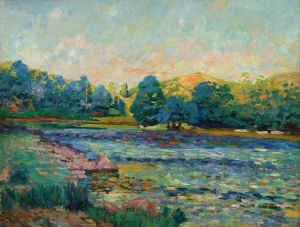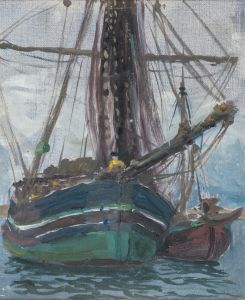
Le Pont-Neuf, effet de neige et brouillard
A hand-painted replica of Camille Pissarro’s masterpiece Le Pont-Neuf, effet de neige et brouillard, meticulously crafted by professional artists to capture the true essence of the original. Each piece is created with museum-quality canvas and rare mineral pigments, carefully painted by experienced artists with delicate brushstrokes and rich, layered colors to perfectly recreate the texture of the original artwork. Unlike machine-printed reproductions, this hand-painted version brings the painting to life, infused with the artist’s emotions and skill in every stroke. Whether for personal collection or home decoration, it instantly elevates the artistic atmosphere of any space.
"Le Pont-Neuf, effet de neige et brouillard" (The Pont-Neuf, Effect of Snow and Fog) is an oil painting created by the renowned French artist Camille Pissarro in 1902. Pissarro, a key figure in the Impressionist movement, is celebrated for his depictions of rural and urban scenes, capturing the essence of the changing seasons and the effects of light and weather.
This particular painting portrays the Pont-Neuf, the oldest standing bridge across the river Seine in Paris, under the atmospheric conditions of snow and fog. The bridge, a significant Parisian landmark, has been a popular subject for many artists, but Pissarro's interpretation stands out due to his unique Impressionist style and his ability to convey the transient effects of weather.
In "Le Pont-Neuf, effet de neige et brouillard," Pissarro uses a muted color palette dominated by whites, grays, and soft blues to depict the snowy and foggy scene. The brushwork is loose and fluid, characteristic of the Impressionist technique, which aims to capture the fleeting effects of light and atmosphere rather than precise details. The painting effectively conveys the cold, damp atmosphere of a winter day in Paris, with the fog blurring the outlines of the buildings and the bridge, creating a sense of depth and distance.
Pissarro's choice of subject reflects his interest in urban scenes and his fascination with the effects of weather on the landscape. The Pont-Neuf, bustling with activity even in the cold weather, is depicted with carriages, pedestrians, and the occasional horse, all rendered with quick, expressive strokes. The fog and snow create a soft, diffused light that envelops the scene, lending it a dreamlike quality.
Camille Pissarro was born on July 10, 1830, on the island of St Thomas in the Danish West Indies (now the U.S. Virgin Islands). He moved to Paris in 1855, where he became a central figure in the Impressionist movement. Pissarro's work is known for its focus on everyday life and his ability to capture the changing effects of light and weather. Throughout his career, he painted numerous scenes of Paris, including views of its bridges, streets, and boulevards.
"Le Pont-Neuf, effet de neige et brouillard" is part of a series of paintings Pissarro created of the Pont-Neuf, each capturing the bridge under different weather conditions and times of day. This series demonstrates Pissarro's dedication to exploring the effects of light and atmosphere, a hallmark of the Impressionist movement.
The painting is housed in the Musée d'Orsay in Paris, which holds an extensive collection of Impressionist and Post-Impressionist masterpieces. The Musée d'Orsay is renowned for its collection of works by artists such as Pissarro, Claude Monet, Edgar Degas, and Pierre-Auguste Renoir, among others.
"Le Pont-Neuf, effet de neige et brouillard" remains a significant work within Pissarro's oeuvre, exemplifying his mastery of capturing the ephemeral qualities of light and weather. It continues to be admired for its atmospheric beauty and its contribution to the Impressionist movement's exploration of modern urban life.





